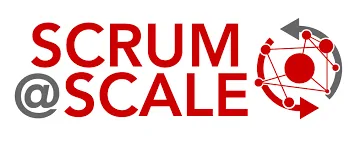Scaling Scrum: Best Practices for Larger Development Teams
Scaling Scrum for larger development teams requires adapting practices like Scrum of Scrums, clear role definitions, effective communication, Agile Release Trains, and continuous improvement. Prioritizing technical excellence and measuring performance helps maintain agility and deliver high-quality results.

In the dynamic world of software development, agile methodologies have emerged as game-changers, allowing teams to adapt quickly to changing requirements. Among these methodologies, Scrum stands out as a popular framework that promotes collaboration, iterative progress, and customer-focused outcomes. However, as projects grow in complexity and team sizes increase, scaling Scrum becomes essential. This blog will explore best practices for larger development teams, helping you harness the full potential of Scrum within a software development company in Bangalore or any other organization.
Understanding Scrum from a Developer's Perspective

At its core, Scrum is designed to enable teams to deliver high-quality software incrementally. It consists of defined roles, events, and artifacts that facilitate collaboration and transparency. For developers, Scrum promotes a structured environment where they can focus on delivering value in short iterations, known as sprints. Each sprint culminates in a potentially shippable product increment, ensuring that the team continuously learns and adapts based on feedback. However, as the team grows, maintaining the same level of agility and communication becomes challenging.
Embrace the Scrum of Scrums
One of the most effective ways to scale Scrum is through the "Scrum of Scrums" (SoS) framework. This approach involves breaking larger teams into smaller, cross-functional groups, each following the Scrum framework. Each team designates a representative to participate in a higher-level Scrum meeting, where they share progress, challenges, and dependencies. This not only helps maintain transparency across teams but also fosters collaboration and alignment on project goals.
Establish Clear Roles and Responsibilities
As team sizes increase, it's crucial to establish clear roles and responsibilities within the Scrum framework. While the roles of Product Owner, Scrum Master, and Development Team remain central, larger teams may benefit from introducing additional roles, such as an Architect or Technical Lead. These roles can help guide architectural decisions, maintain code quality, and ensure alignment with the overall project vision. Clearly defining responsibilities reduces confusion and allows team members to focus on their core competencies.
Implement Effective Communication Channels
In larger teams, effective communication is paramount. Relying solely on face-to-face interactions may become impractical as team sizes grow. Implementing robust communication tools can bridge this gap. Utilize platforms such as Slack, Microsoft Teams, or Zoom for real-time discussions, while project management tools like Jira can help track progress and manage tasks. Regular check-ins and stand-up meetings can keep everyone aligned and provide opportunities to address challenges collaboratively.
Foster a Culture of Continuous Improvement
Scaling Scrum is not just about implementing practices; it's also about fostering a culture of continuous improvement. Encourage teams to conduct regular retrospectives to reflect on their processes, identify areas for improvement, and implement actionable changes. This culture of feedback and adaptation ensures that the teams remain agile, responsive, and engaged, regardless of their size.
Use Agile Release Trains (ARTs)
For software development companies with multiple Scrum teams working on interconnected products, implementing Agile Release Trains (ARTs) can be a game-changer. ARTs consist of multiple Scrum teams that plan, commit, and deliver together within a common cadence. By aligning teams around shared goals and synchronizing their work, ARTs promote better collaboration, reduce dependencies, and enable faster delivery of features.
Prioritize Technical Excellence
As teams scale, maintaining technical excellence is crucial. Encourage practices such as pair programming, code reviews, and test-driven development (TDD) to ensure high-quality code and shared knowledge across the team. Investing in technical training and development will empower developers to adopt best practices and stay up-to-date with emerging technologies.
Measure and Adapt
Finally, measuring the effectiveness of your scaled Scrum practices is essential for ongoing success. Utilize key performance indicators (KPIs) such as velocity, sprint burndown, and cycle time to assess team performance. Regularly review these metrics with your teams to identify areas for improvement and adapt your processes accordingly.
Conclusion
Scaling Scrum for larger development teams presents unique challenges, but with the right practices, it can lead to increased collaboration, improved communication, and higher-quality deliverables. By embracing frameworks like Scrum of Scrums, establishing clear roles, fostering continuous improvement, and prioritizing technical excellence, organizations can navigate the complexities of larger teams while maintaining the agility that Scrum offers. As software development companies in Bangalore and beyond continue to grow, implementing these best practices will be crucial for thriving in a competitive landscape. Adopting these strategies not only enhances team performance but also drives innovation and customer satisfaction, ultimately leading to successful software delivery.
What's Your Reaction?















